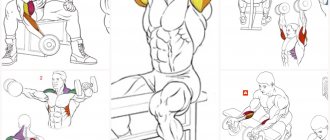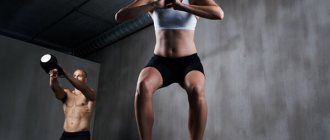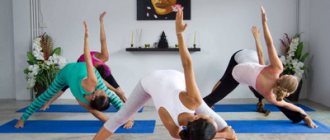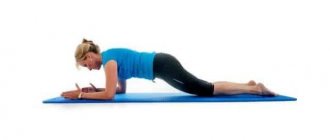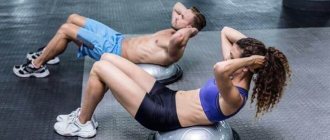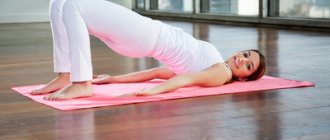Childhood and youth
Joseph Edwin Joe Wider was born in the fall of 1919 in Montreal. The boy was raised in a Jewish family that previously lived in the Polish village of Kurov. He had a desire to go in for sports for a reason: in his youth he had a thin physique, and therefore often could not stand up for himself. When he was insulted again, Joe decided to end it and began intense training.
Posted by Gary Cbiker Travis Monday, February 17, 2014
Joe Weider in his youth
Wider built his first training machine himself, finding an old locomotive axle and car wheels in a landfill. The boy made a barbell out of them, and soon other exercise equipment appeared at his disposal. In his youth, he quickly managed to achieve results; those around him noticed how thin and short Joe matured in a short time.
Biography
early years
Joe Weeder was born on November 29, 1919[2] into a Jewish family that moved to Canada from Kurow, Lublin Province (Poland)[4]. Joe started training quite early. He constructed his first boom from car wheels and a locomotive axle[4].
At the age of seventeen, Joe published the first issue of Your Physique
, in which he talked about his training methods and proper muscle building.
Subsequently, the magazine was renamed “Muscle Builder”
, and then
“Muscle & Fitness”
[5].
Coaching career
In the post-war years, Joe, together with his brother Ben Weider, was actively involved in promoting bodybuilding[4].
The Weeder brothers founded the International Federation of Bodybuilders in 1946 in Montreal.[6] In 1956, he met fashion model and pin-up star Betty Brosmer, who later became his wife (since 1961) and business partner.
In 1965, Joe Weeder created the Mr. Olympia competition.[7] The competition was created to help the winners of the Mr. Universe contest continue training and earn money. Subsequently, Joe trained such famous bodybuilders as: Arnold Schwarzenegger, Franco Colombo, Frank Zane, Louis Ferrigno, Larry Scott and Lee Haney[4][8].
After bodybuilding gained popularity among women, Joe organized the Miss Olympia competition. The first competitions were held in 1970[4].
Joe also founded Weider Publications in 1981, which published fitness magazines such as Shape
,
"Flex"
, "
Muscle & Fitness"
,
"Muscle Power"
,
"Mr America"
,
"Men's Fitness[en]"
,
"Living Fit"
,
"Prime Health and Fitness"
,
"Fit Pregnancy[en]"
,
" Cooks"
and
"Senior Golfer"
. According to Joe, in 2003 Flex magazine had a circulation of 200,000 and Muscle & Fitness had a circulation of 500,000.[9] In 2003, Weider Publications was sold [10][11].
In addition, Joe Weider wrote a series of books about his methods called “The Weider System of Bodybuilding” [8].
Death
Wieder died of heart failure on the morning of March 23, 2013 in Los Angeles, California.[12]
Personal life
Wider's personal life is closely connected with his profession; his popularity in sports circles allowed him to communicate with many interesting people.
Joe weider o pai do fisiculturismo moderno.
#joeweider. #bettyweider Posted by Silvino Young Friday, July 22, 2020
Joe Weider and Betty Brosmer
In 1956, he met his future wife, the famous model Betty Brosmer, with whom he formalized his relationship in 1961. Over time, she became not only his life partner, but also his business assistant. The couple had no children together. From a previous relationship, Wider had a daughter, Lydia Ross, who gave her father three grandchildren.
Joe Weider - Body Building System
multiples of “Mr. Olympia"), Frank Zane (three-time Mr. Olympia), Sergio Oliva (three-time Mr. Olympia), Larry Scott (two-time Mr. Olympia), Franco Colombo (two-time Mr. Olympia), Chris Dickerson ("Mr. Olympia"), Raquel McLeish ("Ms. Olympia"), Lou Ferrigno ("Mr. America", "Mr. International" and twice - "Mr. Universe"), Corinne Everson (US women's champion and three-time Ms. Olympia), Lee Haney (USA, world champion and eight-time Mr. Olympia).
The importance of their victories is better understood when you realize that each of them began athletic training without the slightest idea that he would one day become a world-class star.
In previous years, such amazing physical transformations would have been impossible. In those ancient times, only natural giants had a chance to stand out. Weight training was not known as a science, and weights were a lumbering pile of iron compared to modern, well-functioning equipment.
There were no progressive training methods, no ways to regulate and gradually increase the weight of weights depending on the strength of the individual athlete, as we see in modern athletics. If you did not have sufficient physical strength before starting training, you would not be able to purchase weights anywhere whose weight would correspond to your capabilities, and moreover, it could be increased and decreased at your discretion.
This obstacle was removed at the beginning of the twentieth century, when Alan Colvert introduced collapsible, plate-loaded barbells and dumbbells to the American public. For the first time, ordinary men and women had the opportunity to train with weights, and the sport began to grow in popularity.
Although the equipment was improving at an astonishing rate, the courses and instructions included with the weight sets were based on outdated, nineteenth-century European exercises and training methods. It was as if no one was willing to do the research necessary to improve upon the ancient methods that were in use, mainly because the so-called experts of the day were wary of resistance training.
As a result, athleticism remained a hit-and-miss affair for many years. Weightlifters became champions who developed their bodies by performing basic strength exercises. But even the greatest athletes of those times, nevertheless, could not achieve such anthropometric indicators and such a level of strength that are now considered ordinary among Weider's students who have been training for less than three years!
In the late 1930s and early 1940s, the focus was still on weightlifters, and all the experiments in the iron game were aimed at improving technique and increasing strength. Athletes could only dream of better training methods, special programs, high-quality magazines dedicated to their sport, and people who would be deeply interested in showing them the right path to their goals.
Because each champion of the day had a different training philosophy, athleticism was in chaos. And yet he managed to survive. The desire for strength and physical perfection that every man and every woman feels today was as strong then as it is now.
It was during that period of chaos that I happened to begin my journey in athletics. I was born and raised in Montreal as a weak and skinny boy. At the age of 13, I experienced a humiliating feeling of physical inferiority, realizing how embarrassing it is to be weak, how frustrating it is that everyone can reward you with a kick! I dreamed of a strong, healthy, well-developed body.
I was determined to improve myself and dedicate my life to athleticism, improving my own body and the bodies of others.
Looking back now, I feel that my boyish physical handicap played a major role in the development of the Vader system. While I felt deep pangs of inferiority, rejection, and disappointment, I learned first-hand the value of great strength, a well-developed body, and superior physical fitness.
I finally got hold of a set of weights, complete with instructions from that era, and using those old-fashioned methods, I made some progress. These successes were the first in my career as an athlete, and I was quite satisfied with them. Weight training is preferred over any other form of exercise to build strength, improve health and improve your figure.
I realized the logic behind progressive weight training. It also became clear to me that someone had to be in charge of this. Moreover, I realized that further study of resistance training techniques was needed and that, combined with hard work and research, weight athleticism could provide the answer to many of the physical development problems of millions of men and women.
I worked long and hard, using my own body to experiment, and learned through trial and error. I spent many hours every day corresponding with champions and authorities in the field of resistance training, analyzing their responses and comparing the information received with my own conclusions. A model of scientific athleticism gradually emerged.
I was not surprised to find that the exercises used by the champions and the methods used to apply them were quite different from the instructions sold with the weight sets. Through the same process of trial and error, champions also went to learn the best training methods.
My most significant work was summarizing all the collected material and creating a comprehensive, easy-to-understand training system. From this problem grew the idea of forming the Weider System, as well as my desire to publish athletic magazines superior to any the world had ever seen. I have dedicated my entire life to these two goals.
| Not having the opportunity to personally test | all yours | theory, I enlisted help | friends and all athletes - |
| champions Based on the results of our | work, I | developed certain | training methods— |
| “super series”, “giant series”, “rest-pause”, etc. |
The Mr. competition was approaching. Canada" 1938. I prepared for them using methods that my research found to be most effective. I took second place in the competition, losing only half a point to the winner. A friend of mine who I coached won the top title. As a result of this double success, I became convinced that I had truly discovered the most effective way to train. The Vader System was born!
By that time, I had retired from competitive athletics and weightlifting to dedicate my life to teaching others. Knowing that I had to tell the world something very important, in 1940 I began publishing the magazine “Your Figure”. It was soon followed by the periodicals “Muscle Power”, “American Men”, “Mr. America" and, finally, "Building Muscle and Power" - all dedicated to athletic sports. Today, Building Muscle and Power has evolved into Muscle and Conditioning, the world's premier magazine on athleticism and weight training, recognized by champions, experts and the interested public as the athlete's bible. In their own magazines, together with millions of students, in collaboration with men of the best
More than anyone else in the world, and together with dedicated scientists, I have been able to accumulate material on every phase of resistance training and athleticism. In fact, these studies took on such an amazing scope that I was forced to
Body-building
As soon as the young man acquired relief forms, people began to wonder how he managed to achieve this. Then Wider came up with the idea of presenting his knowledge in a magazine. At the age of 17, he published the first publication containing information on proper muscle building and a training program. 50 thousand copies flew out of the newsstands in a month, at first it was a small brochure called Your Physique, over time it grew into a serious Muscle Builder magazine, then it was renamed Muscle & Fitness.
By that time, the bodybuilder had thoroughly studied the principles of training to build muscle mass, and therefore decided to write the first book in his biography, “The Joe Weider Body Building System,” which became a guide for professionals and beginners in creating sculpted muscles. His body was living proof that putting these tips into practice can produce great results. With a height of 178 cm, he managed to gain weight up to 96 kg (in the off-season he dropped to 85 kg), and his biceps had an impressive volume, while the man remained pumped up, which is clearly visible in numerous photos.
Arnold & Joe Weider???
Published by Motivate GYM: NO PAIN, NO GAIN. Thursday, October 20, 2016
Joe Weider and Arnold Schwarzenegger
Joe was not alone in promoting bodybuilding; his brother Ben Weider helped him in this, with whom he created the International Federation of Bodybuilders in Canada. And together with it he subsequently released another publication, “Bodybuilding from the Widers.” Then the athlete wrote more than one book, for example, “Bodybuilding. Fundamental course", or Mr. Olympia Training Encyclopedia.
At that time, the best bodybuilders participated in the “Mr. Universe”, and the only disadvantage of this event was that the winners were forbidden to participate again in similar competitions. To encourage athletes to continue training, Joe founded the Mr. Olympia competition, in which participants could continue to earn money by performing. And then he and his wife created a company developing sports nutrition; the Wider brand is still popular today.
During his career, Wider was involved not only in organizational matters, the man also worked as a coach. Over the years, the bodybuilder trained with Louis Ferrigno, Arnold Schwarzenegger, Lee Haney, Frank Zaney and many other bodybuilders who made excellent careers in the sport.
Joe Weider: training for beginners
Joe Weider
- American trainer, Guru of Champions.
Date of birth
: November 29, 1919.
What is it known for?
: “father” of world bodybuilding - co-founder of the International Federation of Bodybuilders (IFBB), founder of “Mr. and Miss Olympia." The publishing house of the Wider brothers produced the well-known: Muscle&Fitness, Flex, Men's Fitness and Shape.
Achievements
: created an entire empire of bodybuilding.
Obstacles
: Joe was born into a poor family of Polish Jewish immigrants.
Interesting facts from the biography
: • Completed only 7 classes (which once again proves that “crust” is not the main thing for a successful life). • Wider was such a skinny teenager that coaches refused to train him for fear of injuring Joe. • The first barbell in the Wider brothers' arsenal was a monster assembled from a locomotive axle as a bar and car wheels. • Wider published the first printed edition of “Your Phusique” when he was only 17. This was the beginning of “Muscle&Fitness”. • The initial capital of the Wider brothers' empire was only $7. At least that's the legend. Well, that sounds nice. Motivates.
Detailed biography of Joe Weider
.
General description of the program for beginners from Joe Weider
Weider's program includes basic exercises and is designed for a two-month training cycle of three sessions per week.
The best times would be Monday, Wednesday and Friday. The program does not require any additional changes and is ready “for use” in the form in which it is. Recommendations for implementing the program
: In his beginner program, Weider does not recommend any predetermined weights. Your well-being and energy levels will not always be at the same level, and at times you will be able to lift more or less weight. Strength indicators may be inconsistent and this is normal.
First month of training
Exercises are done in one approach. Select the weight of the weight so that you can do about 6 repetitions with it, all in the same one approach. Close attention must be paid to the correct execution technique, so the weights should in no case be close to critical.
Advice
: when your strength increases and the weight of the weight becomes insufficient, increase it. At the same time, do not change the number of repetitions (6 per set).
Second month of training
Add a second approach. We leave the number of repetitions the same. * If it is not possible to increase the weight, you should increase the first stage of the training until you can handle more weight.
Weekly workout plan from Joe Weider
Monday
1. Bench Press
, medium grip.
2. Raising arms with dumbbells
, lying down.
3. Pullover
with a barbell.
4.
Biceps
curl 5. French bench
press, narrow grip.
6. Barbell rows
to the chest while standing in a bent-over position.
7. Raising arms
with dumbbells while standing.
8. Raising arms
with dumbbells while standing on an incline.
9. Lifting dumbbells
with straight arms in front of you while standing.
10. Exercise for the neck
: hands (locked) on the back of the head and applying pressure forward, trying to lower the head to the chest.
Use your neck muscles to resist this pressure. 11. Lifting the barbell
with movement in the wrist joints, with an overhand grip.
12. Squats with a barbell
on your shoulders.
IMPORTANT! Place emphasis on your entire foot. 13. Calf raises
in a standing position, with a barbell on the shoulders.
14. Leg raises
while lying on a horizontal surface.
Tuesday - rest Wednesday
1. Barbell press
lying down, wide grip.
2. Bending arms
with dumbbells (alternately with each hand) in a sitting position.
3. Arm extensions
with a dumbbell from behind the head in a sitting position.
Alternately with each hand. 4. Exercise for the neck
: placing your hands on the back of your head, pull your head back, overcoming the resistance of your hands.
5. Pulling the barbell
with a narrow grip.
6. Lifting the barbell
in front of you with straight arms while standing.
7. Lifting the barbell
with movement in the wrist joints, with an overhand grip.
8. Rowing the barbell
to the chest, standing in an inclined position, with a wide grip.
9.
Standing barbell
shrugs 10. Squats
with a barbell on your shoulders.
11. Half squats
with a barbell, with arms down behind (Hackenschmidt squats).
12. Calf raises
with a dumbbell in hand (to an elevated position).
If the supporting leg is the right one, then the dumbbell should be held in the right hand. And vice versa. 13. Bend the torso
to the sides, with a dumbbell in one hand.
14. Raising the body
in a lying position.
Thursday - rest Friday
1. Barbell press
lying down, medium grip.
2. French bench
press.
3.
Biceps
curl 4. Standing at an angle, arms with dumbbells bent at the elbow joints, elbows pressed to the body: alternate triceps lift
.
5. Barbell chest press
in a standing position.
6. Raising the barbell
to the chest.
7. Dumbbell row
with one hand while standing in an inclined position, with the other hand resting on the bench.
8. Leg raises
with weights in a lying position.
9. Bend the torso
with a dumbbell behind your head from a standing position.
10. Exercises for the neck
: the head bends forward, the hand exerts pressure on the chin.
11.
Standing biceps
curl 12. Squats
with a barbell on the front.
13. Walking on your toes
with a barbell on your shoulders.
Saturday–Sunday — two days of rest. Monday is the beginning of a new cycle.
